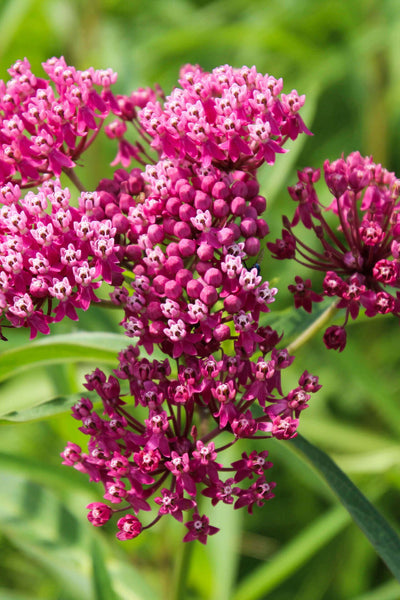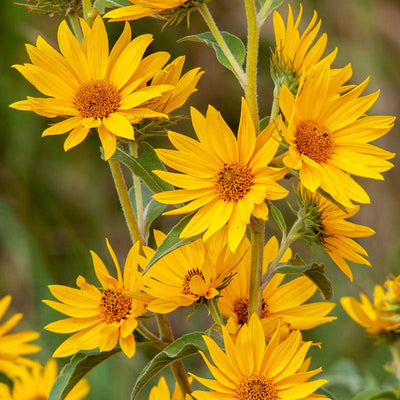Building a Wildlife Friendly Garden in Your Yard
It’s important to revise how people spend time with nature in a world so urbanized. One way to reconnect is to make a wildlife-friendly refuge in your backyard. Whether your thing is birds and butterflies or little critters, there are many methods to make your garden a friendly spot for wildlife. This article will provide a few wildlife-friendly creative tips to help cultivate diverse species in your garden.
Native Landscapes
To have a wildlife-friendly garden, the first thing to have in place is a few native plants. Native plants help budding wildlife with critical habitat, food, and cover. Focus on the plants that are in your locality and incorporate them into your garden. It’s best to have a variety of plants which will provide habitat cover for birds and shrubs, amongst many others. Available native plants for butterflies and birds are butterfly bushes and echinacea.
Pollinator and Butterfly Gardens
The observation of plants and blooms that entice butterflies, bees, moths, and even hummingbirds is an eye-catching and environmentally responsible practice. Butterfly and pollinator gardens are best developed with lavender, milkweed, and bee balm—flowers that are abundant in nectar. Also, provide host plants like dill and fennel for caterpillars. These organisms are typically attracted to warm, bright colors like red, orange, and yellow, so plant flowers in groups to make bold, noticeable patterns.
Bird Feeders and Baths
Birds are one of the favorite animals for any yard. Place bird feeders in the yard with a variety of seeds to catch different species of birds. Some of the best seeds are sunflower seeds, thistle, and even suet. Also, near the feeders, a birdbath is equally very important for birds to drink and bathe in. Feeders and baths must be kept clean to prevent diseases from spreading. They should be placed near trees and shrubs so birds have a good spot to perch.
Pond or Water Feature
Water is a very important part of wildlife and a pond or water feature is a great way to draw animals in. A small pond, birdbath fountain or a simple water dripper can attract a variety of animals to the yard. Frogs and toads, alongside a number of different mammals, will come to the water to refill their hydration. Make sure the water feature is clean to make sure wildlife actually want to come and use it.
Nesting Boxes
To attract and make your yard the home of bats, birds and even owls, feel free to add nesting boxes. There are a number of different bird species, each with their own unique requirements in a nesting box so it is good to know what wildlife you will try to draw in. If done properly, the nesting box will offer birds a protected place to raise their babies. This will increase the amount of wildlife in the area.
Brush Piles and Log Stacks
The construction of brush piles and log stacks is one of the easiest and most effective approaches to attract wildlife. These structures provide resting areas to small mammals, reptiles, and insects. Place logs and branches in the untouched areas of your yard so wildlife can hide away from predators and harsh weather. Brush piles provide additional cover for beneficial insects such as ladybirds and ground beetles, which provide pest control.
Wildlife Friendly Feeding Stations
Feeding wildlife is one of the easiest and fulfilling tasks to accomplish; however, one must be careful of the type of food being provided. Feeders are capable of attracting squirrels, rabbits, and deer, but in the case of bigger animals, feeding of wildlife in densely populated areas should be avoided as it may cause an influx in population, resulting in adverse consequences. To accomplish this, offer natural food sources such as fruit, nuts, and seeds in moderation. It is important to always ensure food sources do not cause an imbalance in the wildlife population.
Native Grass Meadows
Letting part of your yard develop into a self-sown meadow of wild grasses and flowers can attract all types of wildlife. Black-eyed Susans and daisies and other wild flowers serve food to many pollinators. Grass, then, gives shelter to many little insects and mammals. A meadow that has been left to develop provides shelter, breeding, and foraging places for birds and wildlife.
Beneficial Insect Habitats
Healing insects are also very important. Ladybugs, lacewings and ground beetles can all be encouraged by adding a “bug hotel” to your garden. Bugs and hotels made of hollow stems, pinecones, and piles of blocks are ideal for insects. The hotel allows for easy access to places to breed. These insects are needed as your garden will have a balanced ecosystem and proper pest control.
Lighting Suited for Nocturnal Creatures
Wildlife is often most active at night, and the most common wrong types of lighting could alter their natural rhythms. Use red or amber LED lights, which are less bothersome to nocturnal animals, such as bats and some insects. Also, try to minimize the use of bright, glaring lights that can confuse animals and disturb their natural activities. With the use of motion-sensor lights, one can achieve the best compromise between the two -- security and the protection of wildlife.
Conclusion
Wildlife doesn’t have to be a complicated feature of your yard. By providing a sustainable and inviting environment complete with host plants, water, shelter, and food, you can create a habitat for multiple wildlife species in your yard. This is a great way to form a bond with nature, and it also enhances biodiversity and the ecosystem. So get hands-on and be prepared to transform your yard into a wildlife paradise!
Visit TN Nursery for All Your Planting Needs
If you are interested in adding more native and wildlife friendly plants to your yard, you can visit TN Nursery, your online nursery, and get a variety of plants that are wildlife friendly and help in creating a vibrant outdoor space.
FAQs
How do you attract wildlife to your yard?
Attracting wildlife to your yard begins with developing a safe and inviting atmosphere. This can be accomplished by planting appropriate plants, as these will be a source of food, cover, and habitat for wildlife. Put out bird feeders, birdbaths, and other sources of water for them to drink and bathe. You may also want to install nesting boxes for birds and bats. Leaving parts of your garden natural or unknown will also encourage some insects and small mammals to set up home. Attracting a wide variety of species will be possible when you create a healthy, balanced, and biodiverse environment.
How can you attract animals?
To attract animals to your yard, you should provide a variety of food, water, and shelter. Planting native flora will help you attract a wider variety of pollinators, birds, and small mammals. For your feeders, provide seeds such as sunflower, thistle, and millet and supplementary water with a birdbath or small pond. Shelters such as brush piles, loose stacks of logs, or nesting boxes will also attract large animals to your yard. A habitat that meets the needs of a variety of animals is essential to attracting those animals.
What food attracts wildlife?
Animals love foods that offer them some sort of benefit and that they already know. Some birds love to eat seeds such as sunflower seeds, thistle seeds, and even safflower seeds. Some animals like squirrels and rabbits enjoy fruits, nuts, and seeds. If you're looking to draw in deer and some other bigger animals, you should plant trees or bushes that produce fruits such as apples and raspberries. In addition, some lady amphibians can be attracted to certain types of plants. Always research what specific foods the animals you’re trying to reel in require to ensure you offer the right foods.
How to make your yard a wildlife habitat?
To create a wildlife reserve, the first step is to remove non-native plants. This is because non-native plants do not offer wildlife food or shelter. To help birds, you can make bird feeders and bird bathing sites, or make a pond. It is a good idea to let birds and bats nest in the boxes and to provide them with brush and logs. It is best to not use pesticides or herbicides because they can kill the wildlife. If you plant different types of plants and structures, your yard can be a great, self-sustaining habitat that adds wildlife and biodiversity to your area.
Why should I sprinkle coffee grounds around my bird feeder?
Sprinkling coffee grounds is great to stop pests like ants and other bothersome insects from taking over the feeder. The odor of the coffee grounds acts as a repellent to the insects and is harmless to the birds. The coffee grounds also enrich the soil and provide other nutrients that help the birds and plants in the surrounding area.
How to turn your backyard into a sanctuary?
Transforming the backyard into a sanctuary site will require the addition of several features that attract and sustain the wildlife. Start by planting native species, setting up bird feeders, adding a water feature, and creating nests and a brush pile for shelter. Using chemicals that might poison the wildlife is a big no-no, and you also need to let some areas of the garden grow wild. Coexisting animals, insects, and plants will help you turn the yard into a beautifully peaceful sanctuary for diverse creatures.





